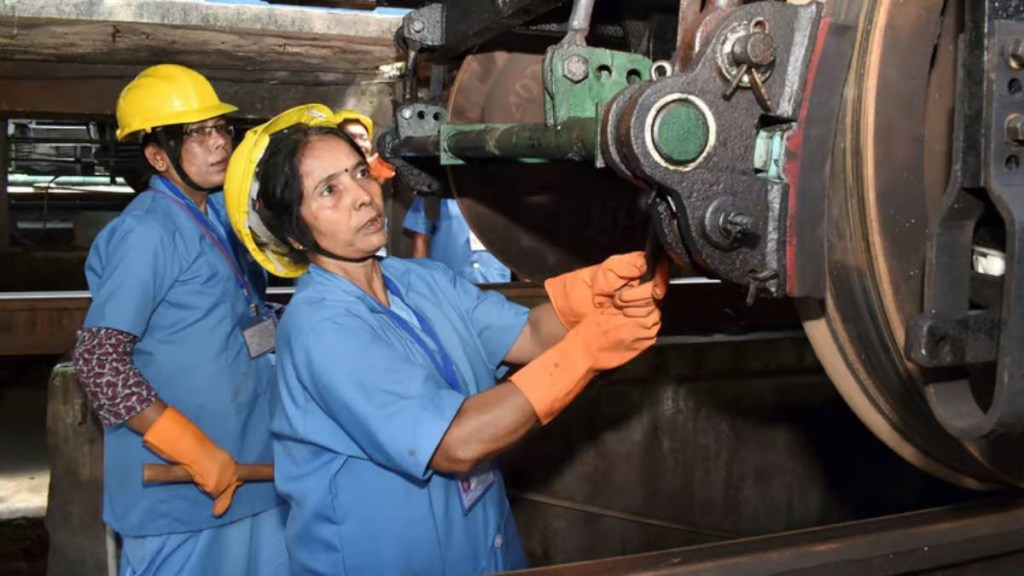The implementation of the four labor codes that have been hanging fire for the last five years and the generation of employment opportunities would likely be the top two priority for the new labour and employment minister Mansukh Mandaviya, analysts said.
However, given that the Opposition-ruled states like West Bengal and Tamil Nadu are among the ones that are still to notify the necessary rules under the codes, the minister will have a tough task at hand.
Consolidating 29 labour-related Acts, the Narendra Modi 2.0 government enacted four labour codes on industrial relations (IR), social security (SS), occupation safety, health and working conditions (OSH), and wage between August 2019 and September 2020, following the passage of these pieces of legislation by Parliament.
In fact, the task of reforming the labour laws, some of which date back to the British Raj, had started soon after the Modi 1.0 government assumed office in 2014.
Partha Pratim Mitra, former Principal Labour and Employment Adviser at the Ministry of Labour, said, “The new labour minister has a difficult task ahead of meeting the aspirations of employers as well as workers through labour reforms, which is to bring about greater flexibility, create jobs, and, more importantly, create decent jobs.”
Labour economist K R Shyam Sundar said, “The new minister’s first crucial task is to implement the rules under the four codes. Equally important is the coordination with states that have yet to frame the rules. This will ensure the codes are uniformly enforced across the country, leading to the widespread benefits of a universal minimum wage and social security universalization”.
Suchita Dutta, Executive Director of the Indian Staffing Federation (ISF), the apex body of the staffing industry, also said the new labour minister should prioritize implementing the codes, which have been kept “painfully on hold” for so many years.
The CII wants a smooth implementation of the labour codes after taking key stakeholders on board, which it reckons will lead to worker welfare and bridge the informal-formal divide, especially in MSMEs and industrial clusters, said Arvind Goel, Chair, CII National Committee on Industrial Relations and Chairman, Tata Autocomp Systems Ltd.
Virjesh Upadhyay, Former general secretary of Bharatiya Mazdoor Sangh (BMS), said that in addition to early implementation of the codes, the minister should strive to generate employment opportunities for the country’s youth and make them employable by skilling, upskilling, and reskilling.
Mandaviya also has his task cut out on the employment front. While there has been a steady decline, as per the National Sample Survey Organisation (NSSO), in the unemployment rate, which came down to its lowest in three years to 3.1% in 2023 for people aged 15 years and above, down from 4.2% in 2021, a much worrying factor is the absence of the women in the workforce. The unemployment rate is defined as the percentage of unemployed people in the workforce.
The NSSO survey revealed that around 40% of the country’s population (both men and women) aged 15 years and above are not in the workforce. Labour Force Participation Rate (LFPR) denotes the percentage of persons in the labour force who are working, seeking, or available for work. The problem is more acute for women in the same age bracket—only 41.3% of them are in the labour force in 2023. LFPR for males was 78.3% in 2023 compared with 78% in 2022 and 77.4% in 2021.
A recent ILO report suggested that Indian youth accounted for almost 83% of the unemployed workforce, but the labour ministry reportedly contested the findings, saying the data lacks consistency and is grossly misinterpreted.
Sundar said the labour minister must consult with his counterparts in finance and industry to identify sectors of job creation and provide stimuli and incentives suitable for the Budget or otherwise. There is a crying need for employment subsidies, which the government should consider introducing in the Budget. The government should appoint an expert committee to help it frame the employment policy.
“The government should introduce employment as merit services and reduce GST from 18% to 5% for larger engagement of workers associated from informal into formal economy. Enhancing social protection measures for vulnerable workers through the formal employment industry. This will give over 22 million workers the opportunity to enter a formal economy and employment,” Dutta said.
R P Yadav, CMD, Genius Consultant, said the government should work to bring down the unemployment rate for persons aged 15 years and above to at least 6% from 7% in May, as suggested by the private sector think tank CMIE.
To be sure, the labour codes represent a significant leap forward, with a comprehensive blend of reformist and social-security measures poised to enhance labour productivity and bolster social security significantly.
The IR code, for instance, aims to streamline business operations, regulate trade unionism, and introduce fixed-term employment for all sectors, thereby fostering a more productive work environment. The other codes, among other provisions, ensure statutory minimum wage, timely wage payment, and an enhanced social security net for all over 50 crore workers, both in organized and unorganized sectors.
Around 90% of the country’s workforce does not fall within the social security net.
Given that labour is on the concurrent list, the codes have a concept of appropriate government, which for some sectors is the Centre and for others, including the private sector, is the respective state government. While most of the states have prepared draft rules under their jurisdiction, the lack of progress in West Bengal and Meghalaya, which have not done even for one, and Tamil Nadu, for the SS code, is a cause for concern.
Delhi has prepared rules for the wage code alone. Though there is no bar for the centre to implement the rules under four codes in the current circumstances, the will do so has been visibly lacking. The task of implementing could be far more challenging this time since unlike the previous two terms, Modi 3.0 comes with a fractured mandate.

